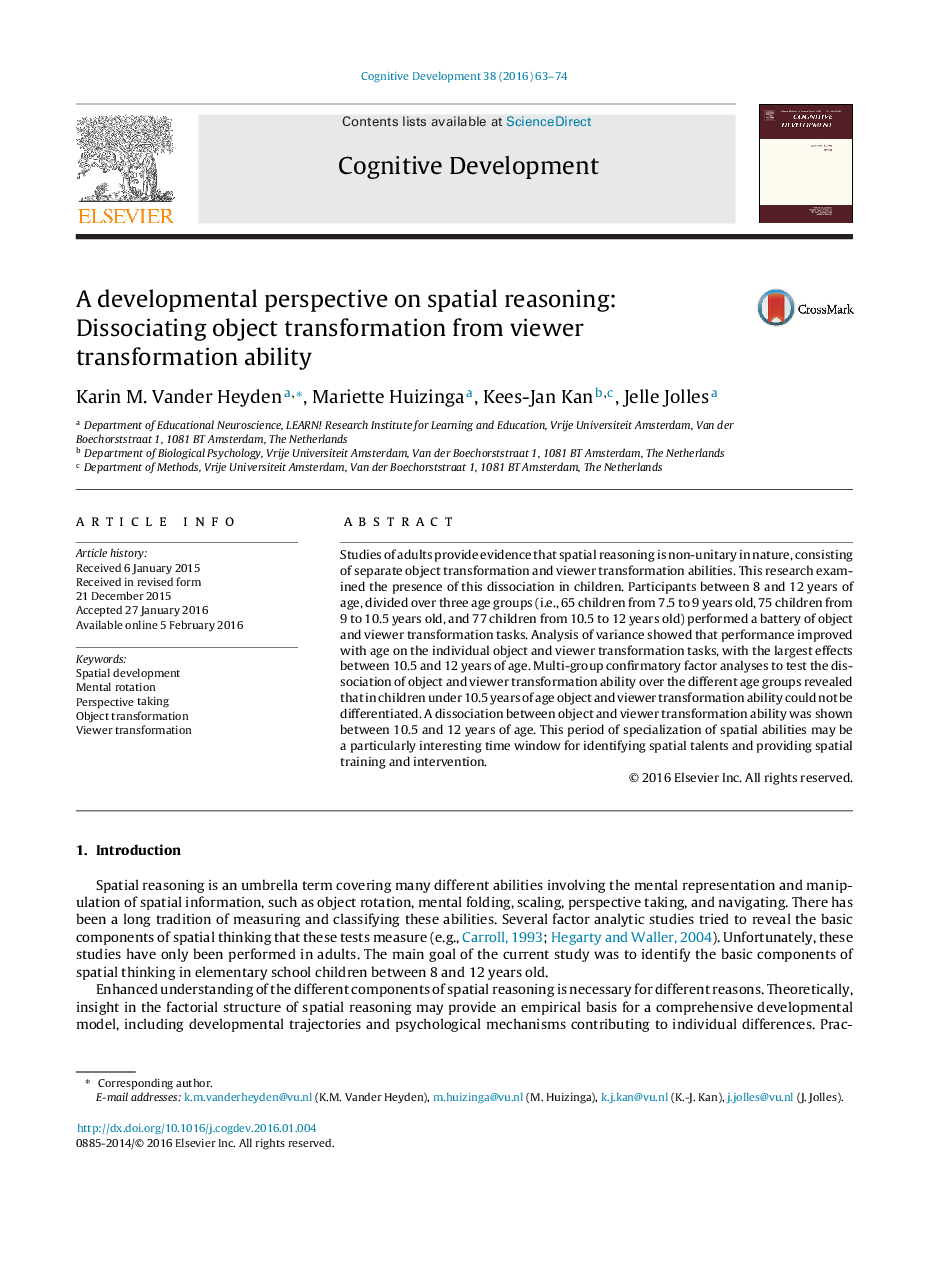| Article ID | Journal | Published Year | Pages | File Type |
|---|---|---|---|---|
| 916457 | Cognitive Development | 2016 | 12 Pages |
•Children between eight and twelve years of age were administered a battery of object and viewer transformation tests.•Analyses of variance showed that performance on these tasks increased with age.•Confirmatory factor analysis revealed no differentiation of object and viewer transformation ability under 10.5 years of age.•A dissociation of object and viewer transformation ability was observed between 10.5 and 12 years of age.•Spatial functions specialize between 8 and 12 years of age, reflecting an interesting time window for interventions.
Studies of adults provide evidence that spatial reasoning is non-unitary in nature, consisting of separate object transformation and viewer transformation abilities. This research examined the presence of this dissociation in children. Participants between 8 and 12 years of age, divided over three age groups (i.e., 65 children from 7.5 to 9 years old, 75 children from 9 to 10.5 years old, and 77 children from 10.5 to 12 years old) performed a battery of object and viewer transformation tasks. Analysis of variance showed that performance improved with age on the individual object and viewer transformation tasks, with the largest effects between 10.5 and 12 years of age. Multi-group confirmatory factor analyses to test the dissociation of object and viewer transformation ability over the different age groups revealed that in children under 10.5 years of age object and viewer transformation ability could not be differentiated. A dissociation between object and viewer transformation ability was shown between 10.5 and 12 years of age. This period of specialization of spatial abilities may be a particularly interesting time window for identifying spatial talents and providing spatial training and intervention.
